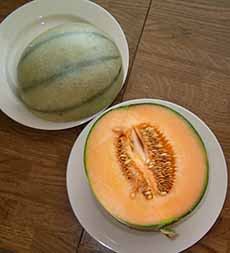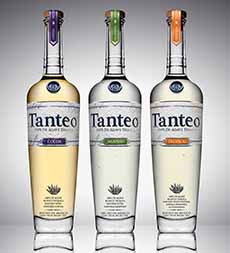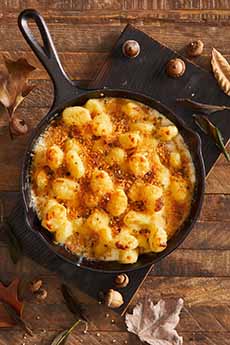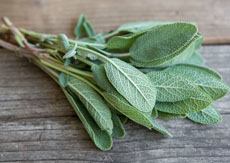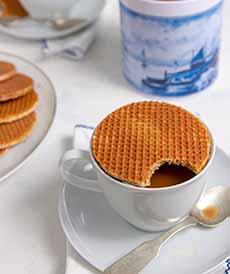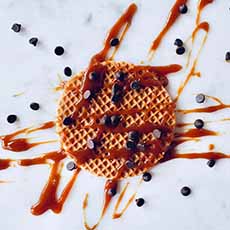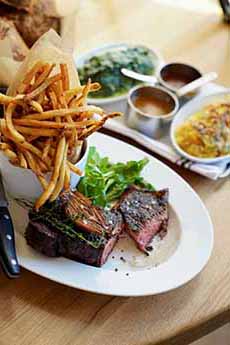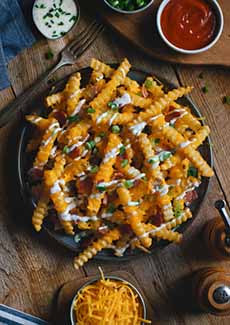|
On July 16, 2018, the city of Buffalo, New York celebrated the first National Blue Cheese Dressing Day, honoring a “special sauce” that’s combined with chicken wings, celery and hot sauce to create Buffalo Wings.
If you’re a Buffalo Wings fan, also note that:
National Blue Cheese Day is October 18th.
National Hot Sauce Day is November 5th.
National Chicken Wing Day is On July 29th (there is currently no National Buffalo Wings Day).
There’s a great blue cheese dressing recipe below.
Blue cheese dressing had a distinguished life before the creation of Buffalo Wings in 1964.
While no one can date blue cheese dressing, the history of blue cheese dates to the 7th century to a cave outside the village of Roquefort in France.
A BRIEF HISTORY OF BLUE CHEESE
Blue cheeses aren’t blue, of course—they’re dotted with veins that are dark blue, blue-green, green or bluish-black.
The veins are Penicillium molds—cousins of the antibiotic. The molds are also relatives of the bloomy mold that covers Bries and Camemberts.
Blue cheese was an accidental discovery.
The documented history of blue cheese begins in the 7th century to a cave outside the village of Roquefort in France.
The legend has is that a distracted young man forgot his lunch of bread and sheep’s milk cheese in the cave (to romantics reading this, the details are that the shepherd saw a beautiful girl).
When he returned months later, the mold (Penicillium roqueforti) had transformed his cheese into what we now known as Roquefort.
Whatever the legend, blue cheese is believed to have been discovered by accident because cheeses were stored at natural temperatures and in the moisture-controlled caves, which are favorable environments for many varieties of harmless mold.
Not everyone could access a cave. But fortunately, blue mold is abundant in the air. It grows rapidly and in proper conditions, it out-competes most other molds in the air [source].
Give it a humid, damp environment with plenty of oxygen—including barns and cellars, where cheese was often stored—and you have the ideal environment for blue mold to grow.
Once cheesemakers realized what was happening, they made pinholes in the cheeses to help the mold penetrate more easily. The practice continues today.
Of the three best-known blues, Gorgonzola is known to have been created around 879 C.E.
Stilton is a relatively new addition, becoming popular sometime in the early 1700s. Subsequently, numerous varieties of blue cheese were created, and still are.
In the 20th century alone, Cambozola and Danablu were created to fill the demand for Roquefort-style cheeses that were more affordable. The double cream blue in photo #7 debuted in 1969.
Great American cheese makers like Point Reyes Farmstead and Rogue Creamery created their cheeses in the late 20th and early 21st centuries.
And cheese makers in the U.S. and Europe continue to work on blue cheese recipes to please blue cheese lovers and entice new ones.
So…what about blue cheese dressing?
No one knows when the first cook crumbled or mashed blue cheese into a dressing or sauce. Let’s just be grateful that the concept took off!
Whether as a salad dressing, a sauce or dip, blue cheese dressing is a gift to food lovers. See more uses for blue cheese dressing below.
POINT REYES FARM’S BLUE CHEESE DRESSING & DIP
One of our favorite blue cheeses is Original Blue from Point Reyes Farmstead Cheese in Marin County, California.
Some 15 years ago, they created a blue cheese dressing with it, and it was magnificent.
Alas, it proved impractical to produce over the long term, and it was discontinued. But thankfully, they made the recipe available.
You can substitute a different blue cheese, but as with all cooking, the better the ingredients, the better the finished result.
Even if you don’t use it in dressing, definitely enjoy Original Blue on your cheese plate.
Ingredients For Approximately 2-1/2 Cups
1 cup crumbled Point Reyes Original Blue (about 4 ounces)
1 cup mayonnaise
1/2 cup buttermilk
1 shallot, peeled
1 tablespoon freshly grated lemon zest
1/2 teaspoon kosher salt
2 tablespoons minced fresh flat-leaf parsley
freshly ground black pepper
Preparation
1. PULSE the mayonnaise, blue cheese, buttermilk, shallot, lemon zest and salt in a food processor or blender to make a chunky dip and dressing.
2. STIR in the parsley and season with plenty of pepper. Use immediately or refrigerate in a tightly sealed container for up to 3 days.
You’ll love it.
USES FOR BLUE CHEESE DRESSING
When you use blue cheese dressing, consider add some blue cheese crumbles.
Buffalo wings and buffalo chicken
Crostini and garlic bread
Dip for chicken fingers, chips, crudités, fries, pretzels, etc.
Mix-in to coleslaw, egg salad, potato salad and other salads bound with mayonnaise, sour cream or yogurt
Pasta: add some dressing to a white sauce
Salad dressing (especially Cobb salad, wedge salad and shaved Brussels sprouts)
Sauce for baked potatoes, burgers, chicken, lamb, pork chops, steak, veggies (broccoli, cauliflower)
Sandwich and wrap spread (don’t forget lettuce wraps and cups—and a BLT or BLAT)
White pizza drizzle
|
|
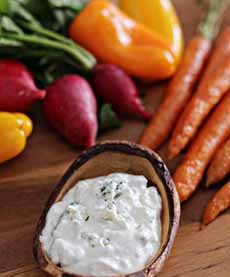
[1] Point Reyes blue cheese dressing. The recipe is below (photo © Point Reyes Farmstead).
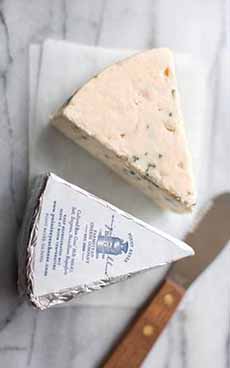
[2] Original Blue, the cheese used in the dressing recipe (photo © Good Eggs).
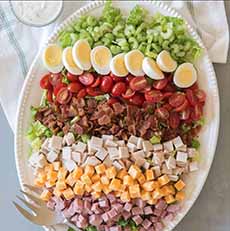
[3] Cobb Salad with a side of blue cheese dressing (photo © eMeals).
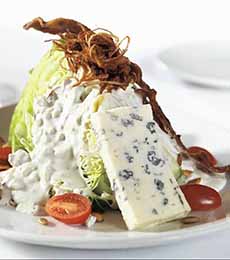
[4] Wedge Salad, another popular use for blue cheese dressing (photo © Fleming’s Prime Steakhouse).

[5] Gorgonzola cheese (photo © Castello Cheese).

[6] Roquefort cheese, the first blue cheese (photo © Castello Cheese).

[7] Double cream blue cheese is a variation introduced in Denmark in 1969 (photo © Castello Cheese).
|








